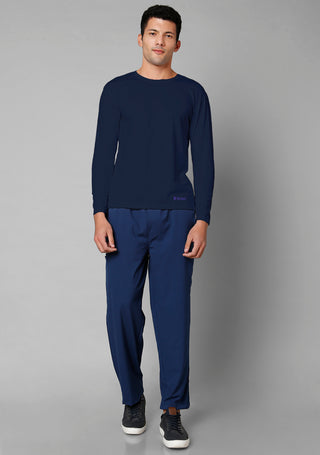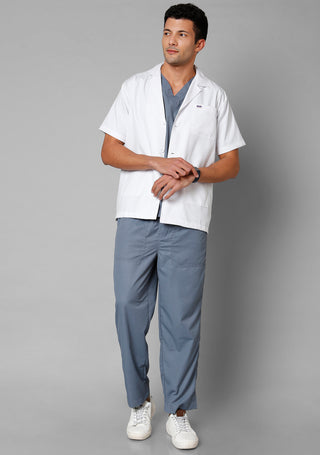Gout and bursitis are both conditions that can cause joint pain, but they arise from different underlying causes and affect distinct parts of the joint structure. This blog will delve into the key differences between gout and bursitis, highlighting their symptoms, causes, diagnostic methods, and treatment approaches.
Browse best Scrubs Collection
Difference Between Gout and Bursitis
Here's a structured overview of the differences between gout and bursitis:
|
Feature |
Gout |
Bursitis |
|
Location of Pain |
Typically affects joints, especially the big toe, ankles, knees, and wrists |
Affects bursae, fluid-filled sacs located near joints |
|
Underlying Cause |
Deposition of monosodium urate crystals due to high uric acid levels |
Inflammation of the bursae due to repetitive motion, injury, or infection |
|
Onset of Symptoms |
Sudden and severe, often at night |
Gradual onset, worsens with movement or pressure |
|
Symptoms |
Intense joint pain, swelling, redness, warmth, stiffness |
Pain, tenderness, swelling near affected joint, limited range of motion |
|
Diagnostic Tests |
Joint fluid analysis (to detect urate crystals), blood tests for uric acid levels |
Physical examination, imaging studies (X-ray, MRI), sometimes aspiration of bursal fluid |
|
Treatment Options |
NSAIDs, colchicine, corticosteroids, urate-lowering medications |
Rest, ice packs, NSAIDs, corticosteroid injections, antibiotics (if infection-related) |
What is Gout?
Gout is a type of arthritis caused by the buildup of urate crystals in the joints, leading to inflammation and intense pain. It often affects the big toe but can involve other joints like the ankles, knees, and wrists. Gout typically manifests as sudden attacks of severe pain, swelling, redness, warmth, and stiffness in the affected joint.
Key Features of Gout:
- Underlying Cause: High levels of uric acid in the blood, which can crystallize and deposit in joints.
- Symptoms: Acute onset of pain (often at night), swelling, redness, warmth, and limited mobility.
- Diagnosis: Joint fluid analysis to detect urate crystals, blood tests for uric acid levels, and imaging studies (X-ray or ultrasound).
- Treatment: NSAIDs (nonsteroidal anti-inflammatory drugs), colchicine, corticosteroids, and medications to lower uric acid levels.
What is Bursitis?
Bursitis is the inflammation of the bursae, small fluid-filled sacs that cushion and lubricate areas where tendons, ligaments, muscles, and bones rub together near joints. Bursitis can occur due to repetitive motion, injury, or infection, leading to pain, swelling, and restricted movement in the affected area.
Key Features of Bursitis:
- Underlying Cause: Repetitive motion, injury, trauma, or infection causing inflammation of the bursae.
- Symptoms: Pain, tenderness, swelling, and warmth near the affected joint, aggravated by movement or pressure.
- Diagnosis: Physical examination, imaging studies such as X-ray or MRI to assess the affected area, and sometimes aspiration of bursal fluid.
- Treatment: Rest, ice packs, NSAIDs to reduce inflammation and pain, corticosteroid injections into the bursa for severe cases, and antibiotics if bursitis is caused by an infection.
Shop the Best Lab Coats from Here!
Similarities Between Gout and Bursitis
Despite their differences, gout and bursitis share some common aspects:
- Both can cause joint pain, swelling, and inflammation.
- Treatment may involve the use of NSAIDs to alleviate symptoms.
- Both conditions may benefit from rest and application of ice packs to reduce inflammation.
Gout and bursitis are distinct conditions that cause joint pain and inflammation, each with its own set of causes, symptoms, and treatment options. Understanding the differences between gout, caused by urate crystals in joints, and bursitis, involving inflammation of the bursae, is crucial for accurate diagnosis and effective management. Proper treatment tailored to the specific condition can help alleviate symptoms, improve joint function, and enhance quality of life for individuals affected by these conditions




















































